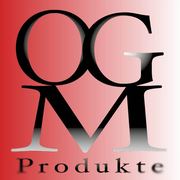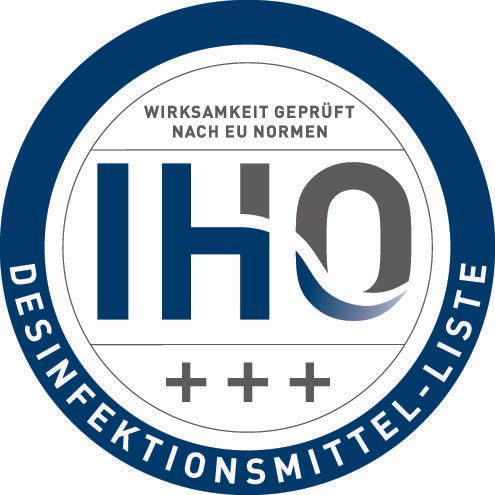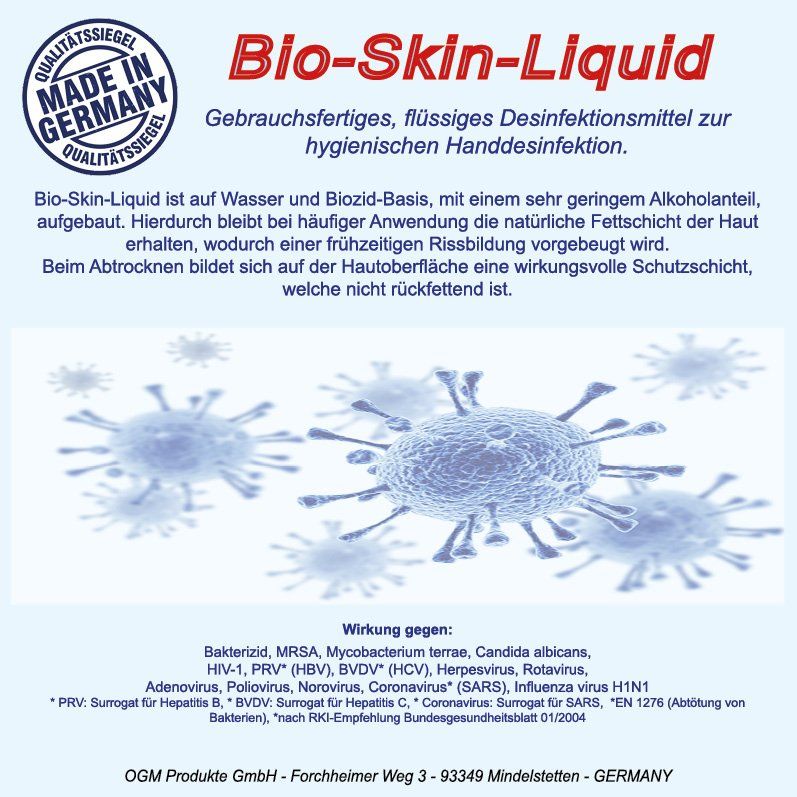Hand sanitizer- New formula -BauA approval N-89871(Federal Institute for Occupational Safety and Health)
The first disinfectant your hands say "thank you" to ...
directly to the shop
Bio-Skin-Liquid is a new disinfectant based on deep-acting biocides, with only 5% alcohol, which no longer dries out your skin and makes it crack.
Challenge
Conventional disinfectants must have an alcohol content of mid. 70% have to effectively kill bacteria and viruses. They are applied and evaporate from the skin after a short time. As a result, your skin becomes extremely degreased, cracked and starts to burn. The cracked skin gives the bacteria even more access to the immune system.
Anyone who uses an alcohol disinfectant several times a day has broken hands.
In our Bio-Skin-Liquid, however, only 5% alcohol is required to have a lasting effect.
By using BAC biocides (approved for medical use), we only need the low alcohol content to cover the spectrum of activity. Corresponding care additives are also included, which are not moisturizing.
Bio-Skin-Liquid does not evaporate, but rather deposits the active ingredients on the surface of the skin when it dries. Seen figuratively speaking, you pull an invisible "protective glove" over your hands when using Bio-Skin-Liquid.
application:
Approx. Rub 3 ml Bio-Skin-Liquid evenly in your hands and allow to dry. When drying off, a lasting protective layer forms on the surface of the skin. For sensitive skin, wash with clean water after 5 minutes.
Admission / mandatory information:
Bactericidal, MRSA, Mycobacterium terrae, Candida albicans,
HIV-1, PRV * (HBV), BVDV * (HCV), herpes virus, rotavirus,
Adenovirus, poliovirus, norovirus, coronavirus * (SARS), influenza virus H1N1
* PRV: surrogate for hepatitis B, * BVDV: surrogate for hepatitis C, * coronavirus: surrogate for SARS, * EN 1276 (kills bacteria), * according to RKI recommendation Federal Health Gazette 01/2004
For private and commercial users. Consumption approx. 3ml
BAuA registration number: Bio-SKIN-Liquid N-89871
Contains among other things: 2-propanol (<5%), quaternary ammonium compounds, benzyl-C12-16-alkyldimethyl-, chlorides (<2.49%). Store upright and frost-free.
Warning: causes skin irritation. Causes serious eye irritation. Harmful to aquatic organisms, with long-term effect. If medical advice is needed, have container or label ready. Keep out of the reach of children. Avoid release to the environment. In the event of skin irritation: Get medical advice / assistance. If eye irritation persists: Get medical advice / attention. Dispose of contents and containers to a collection point for hazardous or special waste in accordance with local, regional, national and / or international regulations. Use biocidal product carefully. Always read the label and product information before use, please refer to the safety data sheet for further information.
Active ingredient detection:
BIO-SKIN liquid
Registration number: N-89871
Product Type: Human Hygiene
Hand sanitizer
Proof of active ingredients Bio-Skin-Liquid:
Main active ingredient at least 1.5%: alkyl (C12-16) dimethylbenzylammonium chloride (ADBAC / BK C (C12-16))
Auxiliary active ingredient at least 2%: propane-2ol CAS no. 67-63-0
Benzalkonium chloride (QAV) is a surface-active quaternary ammonium compound. It is a mixture of
Alkylbenzyldimethylammonium chlorides, the alkyl part of which consists of C8 to C18 chains.
Benzalkonium chloride (QAV) is an active ingredient from the group of antiseptics with antibacterial and antiviral properties.
The effects are based on the disruption of the cell membrane, respectively. The lipid bilayer of organisms.
Benzalkonium chloride in concentrations of 0.001-0.2% is mainly used in pharmacy as a preservative for eye drops,
Used nasal sprays and inhalation solutions.
When used as a disinfectant for skin disinfection, concentrations above 0.5% are recommended.
Their surface-active effect enables these QAVs to attach to the cell membrane of living things, making them permeableand loses its function.
This creates a disinfecting, germicidal effect. QAVs are used in a wide range of applications for disinfection.
The active ingredient is used for this purpose in hospitals, food processing and industry. Not only are the floors there,
But also the surgical instruments and examination instruments, the production machines and other devices are cleaned with the help of QAV. Pharmaceutical products can also contain QAC, as a preservative in nasal sprays or as an active ingredient in chemical contraceptives.
In the medical field QAV can also be used as antiseptics against superficial burns, in ointments and in the mouth and
Hand rinses apply.
QAV are also used in dental products, for example in materials for treating the interior of the tooth or in adhesive systems.
As a skin disinfectant, it is used as a spray solution from a concentration of 0.5%.
Benzalkonium chloride is antibacterial and antiviral against some enveloped viruses (e.g. herpes viruses, hepatitis B virus, influenza virus). It is less effective against gram-negative bacteria, fungi and spores. Some sources also attribute antifungal properties to it. The effects are based on a disruption of the permeability of cell membranes and the function of proteins and enzymes.
application areas
Therapeutic indications:
- Topical disinfection, e.g. in the case of inflammation in the mouth and throat, for skin disinfection.
- As a spermicide for contraception, see Benzalkonium chloride tampons.
Pharmaceutical excipient:
- As a preservative for medicines.
- As a hand disinfectant
- As a surface disinfectant
Bibliography
- Pharmaceutical product information (CH, D) -
- Basketter DA, Marriott M., Gilmour NJ, White IR Strong irritants masquerading as skin allergens: the case of benzalkonium chloride. Contact
Dermatitis, 2004, 50 (4), 213-7 Pubmed
- European Medicines Agency
- European Pharmacopoeia PhEur
- George M., Joshi SV, Concepcion E., Lee H. Paradoxical bronchospasm from benzalkonium chloride (BAC) preservative in albuterol nebulizer
solution in a patient with acute severe asthma. A case report and literature review of airway effects of BAC. Respir Med Case Rep, 2017, 21, 39-
41 Pubmed
- Graf P. Benzalkonium chloride as a preservative in nasal solutions: re-examining the data. Respir Med, 2001, 95 (9), 728-33 Pubmed
- Graf P. Adverse effects of benzalkonium chloride on the nasal mucosa: allergic rhinitis and rhinitis medicamentosa. Clin Ther, 1999, 21 (10), 1749-
55 Pubmed
- Encyclopedias of food technology and pharmacy
- Noecker R., Miller KV Benzalkonium chloride in glaucoma medications. Ocul Surf, 2011, 9 (3), 159-62 Pubmed
- Product catalogs
- Rasmussen CA, Kaufman PL, Kiland JA Benzalkonium chloride and glaucoma. J Ocul Pharmacol Ther, 2014, 30 (2-3), 163-9 Pubmed





